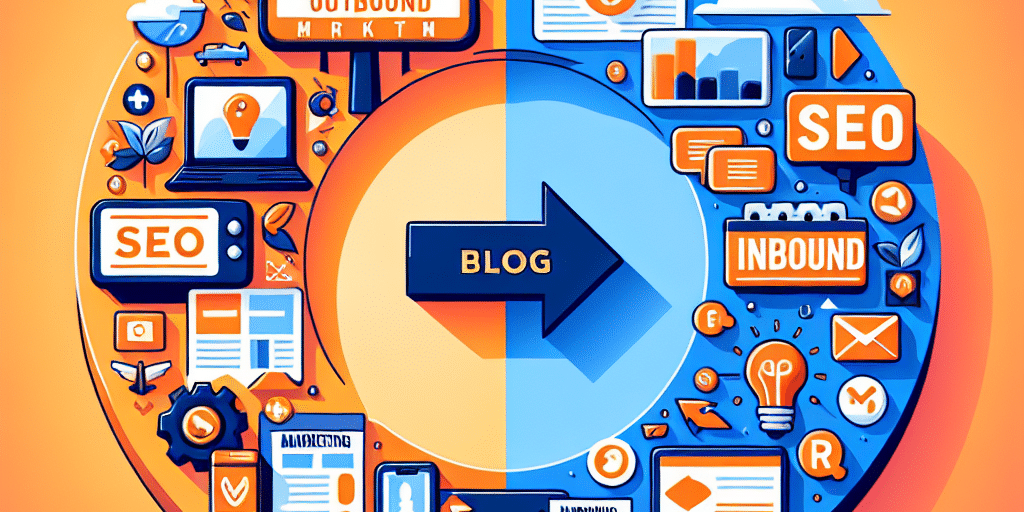Making the Switch: Transitioning from Outbound to Inbound Marketing
The digital age has revolutionized the way businesses market their products and services. Traditional outbound marketing strategies, once heralded as the cornerstone of advertising, are increasingly being supplanted by inbound marketing techniques that align more closely with contemporary consumer behavior. If your business is contemplating making the switch from outbound to inbound marketing, you are on the cusp of a significant and potentially game-changing transformation. This article will guide you through this transition, highlighting the why, what, and how of adopting an inbound marketing strategy.
Why Make the Switch?
-
Changing Consumer Behavior:
Today’s consumers are savvy and resourceful. They prefer to research products and services on their own terms, often ignoring intrusive advertisements. Inbound marketing aligns with this behavior by providing valuable content that attracts and engages potential customers naturally. -
Cost-Effectiveness:
Outbound marketing methods such as TV ads, cold calling, and direct mail are notoriously expensive and often yield lower ROI. Inbound marketing, on the other hand, leverages content marketing, social media, and SEO, which are more cost-effective and have a better track record of converting leads into customers. - Sustainable Growth:
Inbound methodologies are built on creating lasting relationships with customers. These strategies drive consistent, long-term growth by building brand loyalty and trust, as opposed to the fleeting impact of traditional ads.
What is Inbound Marketing?
Inbound marketing is a strategy that focuses on creating valuable, relevant, and consistent content to attract and retain a clearly defined audience—and, ultimately, to drive profitable customer action. Unlike outbound marketing where companies push their messages to consumers, inbound marketing pulls in potential customers by answering their questions and solving their problems.
Key Components of Inbound Marketing:
- Content Creation: Blogs, eBooks, videos, infographics, and podcasts that answer questions and solve problems for your target audience.
- SEO (Search Engine Optimization): Techniques to increase your content’s visibility on search engines, making it easier for potential customers to find your business.
- Social Media: Platforms like Facebook, Twitter, LinkedIn, and Instagram are used to distribute content, engage with customers, and build community.
- Email Marketing: Segmented and personalized emails to nurture leads and build customer relationships.
- Landing Pages and Forms: Optimized for conversion, these elements capture leads and collect valuable customer data.
How to Make the Switch
-
Evaluate Your Current Strategy:
Assess your current marketing efforts. What’s working? What’s not? Use analytics tools to measure the effectiveness of your outbound campaigns. Understanding your current situation is crucial for making informed decisions moving forward. -
Define Your Buyer Personas:
Buyer personas are semi-fictional representations of your ideal customers based on market research and real data about your existing customers. These will guide your content creation, ensuring it is relevant and engaging to your target audience. -
Set Clear Goals:
Establish what you aim to achieve with your inbound marketing strategy. Whether it’s increasing website traffic, improving conversion rates, or boosting customer retention, having clear, measurable goals will help direct your efforts and measure success. -
Create Quality Content:
Develop a content calendar that includes a mix of blogs, videos, social media posts, and downloadable resources. Ensure your content is informative, engaging, and tailored to the needs of your personas. -
Optimize for SEO:
Conduct keyword research to understand what your target audience is searching for. Optimize your content to rank well in search engine results, ensuring it reaches your audience. -
Leverage Technology:
Utilize marketing automation tools to streamline your efforts. Platforms like HubSpot, Marketo, or Mailchimp can help manage your email campaigns, social media posts, and lead nurturing processes. -
Engage on Social Media:
Actively participate in social media conversations. Share your content, engage with followers, and leverage these platforms to build a community around your brand. - Measure and Refine:
Use analytics to track the performance of your inbound campaigns. Regularly review key metrics such as website traffic, bounce rates, conversion rates, and customer engagement. Use these insights to refine and improve your strategies.
Challenges to Anticipate
-
Cultural Shift:
Transitioning to inbound marketing involves a fundamental change in how your team views and practices marketing. Training and mindset shifts will be necessary. -
Time and Patience:
Inbound marketing is a long-term strategy. Results may take time to materialize, so patience and consistency are key. - Resource Allocation:
Creating quality content and managing inbound campaigns require dedicated resources. Ensure that your team is equipped with the skills and tools needed to succeed.
Conclusion
Making the switch from outbound to inbound marketing is not merely a trend but a strategic move toward more effective and sustainable growth. By focusing on providing value and building relationships, businesses can attract and retain customers in a way that outbound marketing simply cannot achieve. With careful planning, execution, and a commitment to learning and adapting, your transition to inbound marketing can pave the way for lasting success in the digital age.







